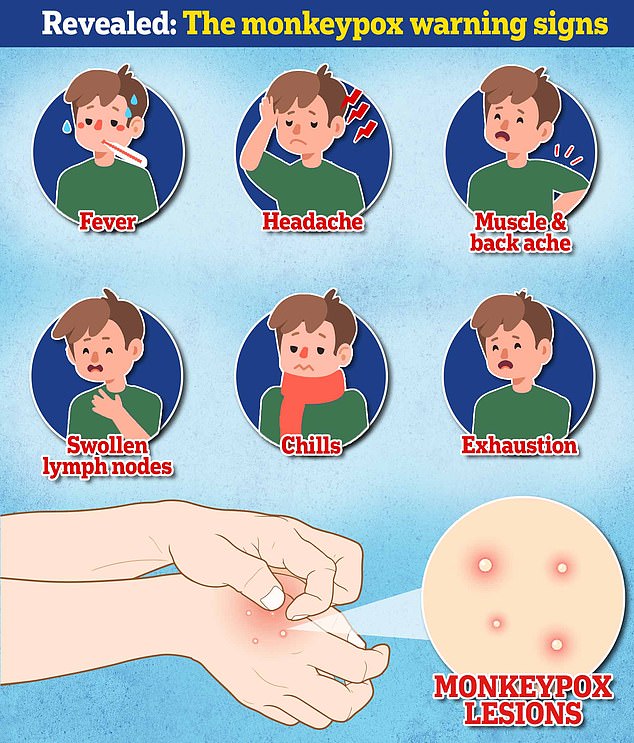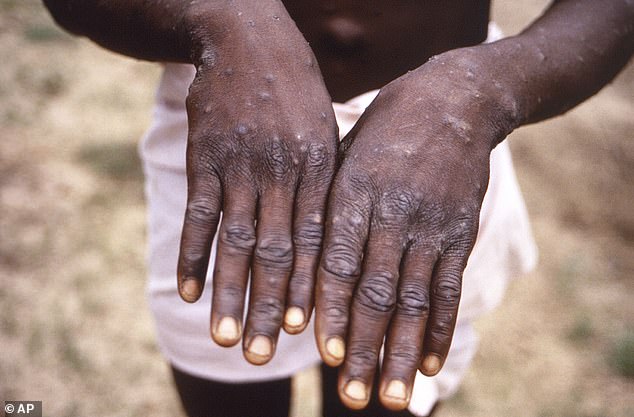Europe must prepare for the “most dangerous” strain of mpox yet, which is believed to be behind a wave of miscarriages in Africa, experts warn.
A mutant form of the virus that causes the rash is spreading rampantly in the Democratic Republic of the Congo (DRC), killing about 10 percent of those infected.
It is a descendant of the deadly clade 1 mpox strain, previously known as monkeypox, and different from the mild version that spread to more than a dozen countries, including the United Kingdom, in 2022.
Experts are concerned because the new version has evolved to be even more infectious than its predecessor, and one British expert said it could easily spread further by plane.
Scientists said the strain, first discovered in February, was “without a doubt” the “most dangerous” yet and would inevitably “cross borders”.
A mutant form of the virus that causes the rash is spreading rampantly in the Democratic Republic of the Congo (DRC), killing up to 10 percent of those infected. It is a descendant of the deadly clade 1 mpox strain, previously known as monkeypox, and different from the mild version that spread to more than a dozen countries, including the United Kingdom, in 2022.

They urged the international community to act quickly to help prevent any potential international mox outbreak.
The most recent data from the World Health Organization shows that more than 7,800 cases of mox were recorded in the country in 2024 alone, including 384 deaths.
However, it is unclear exactly how many cases and deaths the new strain accounts for, as older versions are still circulating.
But Leandre Murhula Masirika, research coordinator at the health department of South Kivu province in the Democratic Republic of the Congo, said the known cases are “just the tip of the iceberg.”
“Cases are increasing every day and it is only a matter of time before it spreads to other countries,” he added.
“Most of the patients we have in the Democratic Republic of the Congo are patients who have links to neighboring countries.”
So far, all cases have been reported in cities in the Democratic Republic of the Congo that border the nations of Rwanda, Burundi and Uganda.
Experts said it was highly likely that the virus had already reached these neighboring countries, although no cases have been confirmed outside the Democratic Republic of the Congo.
Scientists warned that sex workers regularly travel between the Democratic Republic of the Congo and its neighbors, meaning this could be a potential route of transmission.
The city of Goma in the Democratic Republic of the Congo also has an international airport that offers frequent direct flights to Europe, a possible route to the continent for the virus, Masirika warned.
A different, less severe form of mpox, called clade II, caused alarm among health officials around the world in 2022 when it began to spread rapidly in several countries, primarily through sexual contact between gay and bisexual men.
However, new infections gradually declined amid heightened awareness of the disease and a rushed vaccination programme.
At the time, the United Kingdom reported nearly 4,000 cases, and England’s National Health Service inoculated more than 68,000 people against the disease with the smallpox vaccine, which works because the two viruses are closely related.
But experts said there was not yet enough evidence to suggest the vaccine would be effective against this new strain.
They believe it can be spread by means other than sexual contact.
Speaking to reporters today, Professor Trudie Lang, director of the Oxford University Global Health Network, said the mutated strain was also spreading through simple contact.
He said this meant it was easily transmitted from mother to child, as well as in schools and workplaces, adding that another worrying aspect was that the infection in pregnant women was causing an “alarming” number of miscarriages.
Experts also said that some cases had even led to irreversible vision loss, as well as recurring skin rashes all over the body.
The mortality rate from infection has been estimated between 5 and 10 percent in adults and children respectively, similar to its predecessor.
So far, around 600 patients with the mutant strain have been identified in Kamituga, the city where it was first detected.
However, experts warn that the real figure could be much higher, given that hospitals only record serious cases that require advanced care.
The number of asymptomatic cases or people with minimal symptoms, who could still spread the infection, is also still unknown.
Professor Lang added that it remained to be seen whether the new strain could cause a pandemic, but urged authorities to be prepared.
‘The issue of the pandemic is always difficult. We need to be really vigilant now and try to act to contain it.
“There is always room for me to get on a plane,” he said.

